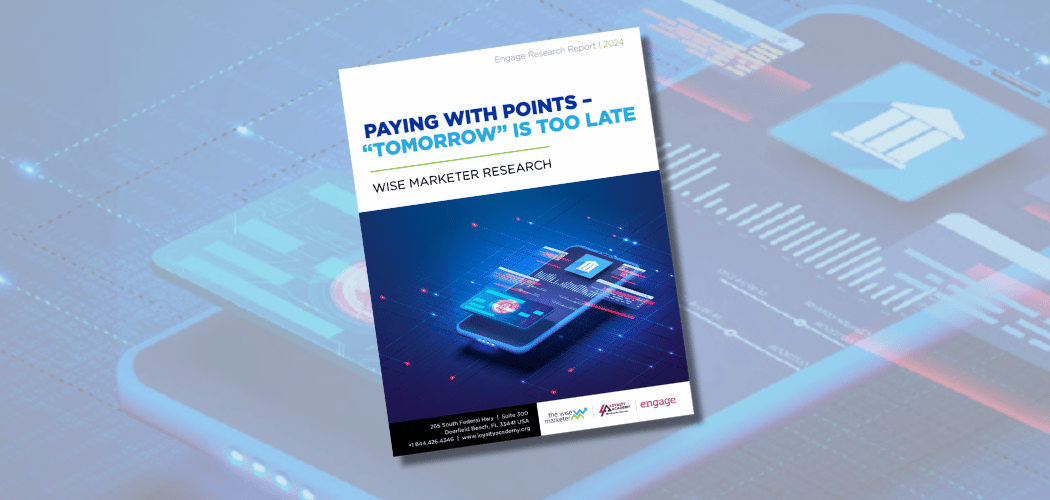In a customer loyalty world filled with a proliferation of competitive “published” benefits and rewards, one might ask, why would a brand consider offering its loyalty members unpublished or covert benefits and rewards? How would a brand benefit from such a loyalty strategy?
To answer this question, it is important to firstly declare that there is no doubt brands must publish the key benefits and rewards attached to their customer loyalty programs. Doing so helps to acquire customers to become program members, provides motivation for members to engage and stay loyal to a brand and when done properly, generates loyalty to the brand proper.
However, when brands publish all of their benefits and rewards in plain sight of their competitors, it provides competitors the opportunity to benchmark and advance their own programs. Additionally, once published, there is a commitment made by the brand to deliver on these published benefits and rewards consistently. A brand’s inability to do so risks alienating members and even worse, can lead to customer defection. Lastly, when publishing rewards and benefits, there is a financial commitment in the form of a liability that sits on the financial books of the organization.
While I am not advocating that brands discontinue publishing their loyalty program benefits and rewards, there is most certainly a role for brands to introduce some “unpublished” or “covert” benefits and rewards into their loyalty program offerings. There are several strategic and financial upsides to doing so.
Emotional contagion

There is no doubt that when a program member earns/receives a program benefit or reward, satisfaction with the program and the brand elevates. After all, members join loyalty programs not just to collect points or miles but to reap the benefits and rewards in return for their loyalty to a brand. In the case of unpublished benefits and rewards, there is no expectation of such benefits and rewards from the program member, as it is never publicized to program members.
Consequently, when such rewards or benefits are presented to the program member unexpectedly, they tend to be greeted with exponentially greater surprise, enthusiasm, jubilation, and in turn love for the brand. This emotional reaction is most notable when the benefit and/or reward is specially curated and has a strong tangible value or personalized experience.
Unpublished rewards or benefits tend to be shared with much greater amplification by the recipient within their social circles, compared to published rewards or benefits. This emotional contagion often results in the spread of multiple positive emotions for the brand to others who learn about the unpublished surprise. It can often spur incremental interest and motivate others to display greater commitment to the brand in hopes of receiving the same unpublished rewards and benefits.
Falling under the radar screen of competitors

When benefits and rewards are not published or advertised, it becomes extremely difficult for competitive brands to understand what your brand is doing in the marketplace. It allows your brand to operate unfettered, under the radar screen. Therefore, your competitors have no ability to match or upstage your efforts nor lure your members away from your brand.
In a published rewards and benefits environment, your competitors have full visibility, and it is open season for them to rip off, duplicate, match or even degrade your rewards and benefits offering.
Selectivity and discretion for your brand

When a brand does not publish several of their benefits and rewards, they can pick and choose who they want to offer the benefits and rewards to without commitment and expectation. This provides brands with the ultimate flexibility to make pinpoint decisions to change member behavior. In a published world, all of this needs to be predefined and publicly declared. Once declared, the brand is on the hook to deliver, even if the business need or competitive environment changes.
When brands alter their published rewards, there is often negative sentiment associated with such changes. We have all witnessed this in many sectors when brands have had to devalue or even remove some loyalty benefits and rewards. Such program changes have come in the way of increasing tier eligibility, reducing benefits inside of tiers, curtailing the number of points or miles earned per dollar spent, and reward redemption inflation.
With unpublished benefits and rewards, there is no visibility or expectation, therefore when there is a need to pivot, it has an inconsequential impact on member sentiment.
Financial investment optimization

Published loyalty program rewards and benefits are usually designed to drive profitable behavior change. When done properly brands can manage their loyalty liability. However, we know that business dynamics and market changes require businesses to pivot how they offer rewards and benefits. A public declaration places the brand on the hook to deliver. Published tiers and personalization can be effective to place benefits and rewards investment against the member segments who have the highest propensity to deliver financial upside to the brand.
However, unpublished benefits and rewards provide brands with the ultimate financial flexibility to optimize the strategic and financial relationship with program members when required. This is because there is no declared commitment by the brand, therefore the brand can make pinpoint decisions as to how, where when and how much to invest in benefits and rewards without any commitment to program members.
Take Aways
There are different incarnations of unpublished rewards. Sometimes brands construct unpublished benefits for their very best program members (i.e., their top 1% of members that deliver for instance 10% of their profitability). This is often done to specially recognize and reward this very valuable cohort of members and ensure that they do not reduce their financial commitment with the brand, or even worse attrite.
In other situations, brands will offer unpublished surprise and delight rewards or benefits to members who have achieved a special financial milestone with the brand. Alternatively, it might be offered up serendipitously to members who are close to a tier level achievement in order to provide motivation to succeed in attaining the tier level eligibility.
Suffice it to say, I am not advocating that brands should abolish published rewards. I am highly recommending that brands consider the introduction of some unpublished or covert rewards and benefits in conjunction with published rewards and benefits, for the aforementioned strategic and financial reasons.

About the Author: Richard is a highly accomplished customer engagement thought leader, loyalty practitioner and partnership curator who has designed, renovated, and managed some of the world’s leading customer loyalty programs. He has an impeccable track record of success at enriching transactional and emotional relationships between iconic brands and their customers, across multiple business sectors.
Richard has spent the first half of his career in senior loyalty roles with several renowned brands and the remainder of his career in leadership roles with leading loyalty agencies. Currently he is the Founder & Chief Customer Engagement Officer of Loyal Strategy Consulting, a consulting firm focused on enriching customer loyalty for leading brands. Richard can be reached at: rschenker@loyalstrategyconsulting.com





